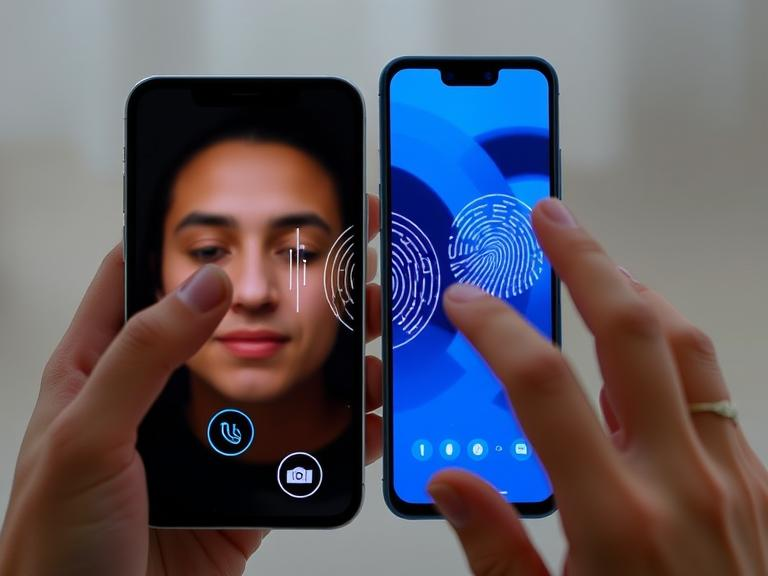Hardware Integration Design
From cameras for face ID to sensors for fingerprinting, creating a harmonious relationship between the physical device and the software interface is a crucial element of modern UI / UX.

From cameras for face ID to sensors for fingerprinting, creating a harmonious relationship between the physical device and the software interface is a crucial element of modern UI / UX.
In today's technology-driven world, the lines between hardware and software are becoming increasingly blurred. Devices are now equipped with a wide array of hardware features, such as fingerprint sensors, cameras, accelerometers, and more. As product managers, it is crucial to consider how our software interfaces interact with these hardware features to create a seamless and enjoyable user experience. Poor integration can lead to jarring experiences, user frustration, and ultimately, product failure.
The Importance of Hardware Integration Design
It involves understanding the capabilities and limitations of the hardware and designing interactions that feel natural and intuitive. When done well, hardware integration can enhance user experience by:
- Improving usability: By leveraging hardware features, designers can create more efficient and user-friendly interactions. For example, using a fingerprint sensor for authentication can be faster and more convenient than typing in a password.
- Creating a more immersive experience: Integrating hardware features like accelerometers and gyroscopes can enable motion-based interactions, adding a new dimension to the user experience.
- Providing context-aware interactions: Hardware sensors can provide information about the user's environment, allowing the software to adapt and offer relevant features. For example, GPS data to pick a user's location and provide personalized recommendations.
To achieve this harmony, the role of hardware interaction design is crucial to ensure that interactions with the physical device are intuitive and user-centered. Product managers & designers need to consider how the hardware and software complement each other, resulting in a cohesive and satisfying user experience.
Key Hardware Features To Harness
A wide range of hardware features can be integrated into UI/UX design, each offering unique possibilities for enhancing user experience. Some common examples include:
- Sensors: These include fingerprint sensors, cameras, accelerometers, gyroscopes, proximity sensors, and ambient light sensors. They can be used for various purposes, such as authentication, motion-based interactions, and context-aware features.
- Visual actuators: LEDs and displays provide visual feedback to the user, indicating device status, notifications, or progress.
- Sonic interfaces: Speakers and microphones enable audio interactions, such as voice commands, sound notifications, and audio feedback.
- Haptic feedback: Vibration motors provide tactile feedback, adding a physical dimension to user interactions, notifications & input errors.
- Connectivity: Bluetooth, Wi-Fi, and NFC enable seamless communication between devices and enhance user experience through features like data synchronization and wireless control.
Guidelines and Best Practices for Hardware Integration Design
Challenges and Opportunities
Hardware integration design presents both challenges and opportunities for UI/UX designers. Some of the challenges include:
- Keeping up with evolving technology: New hardware features are constantly emerging, requiring designers to stay updated and adapt their design approaches.
- Compatibility issues: Ensuring compatibility between different hardware and software versions can be complex and require careful planning.
However, these challenges also create opportunities for innovation and creativity. By embracing new technologies and design approaches, product managers & UI/UX designers can create truly unique and engaging user experiences. Moreover, it's crucial to recognize the iterative nature of hardware integration design. Continuous evaluation, feedback cycles, and collaboration between engineering, product and design teams are essential for refining the design and ensuring a successful outcome.
Synthesis
Hardware integration design is an essential aspect of UI/UX design in today's digital roadmap. By carefully considering how software interfaces interact with hardware features, teams can create seamless, intuitive, and enjoyable user experiences. This involves understanding the capabilities and limitations of the hardware, designing for accessibility, prioritizing clarity to users & a very iterative approach to test with various user cohorts & refine. In the end, the additional efforts involved become worthwhile when simplified user interactions result in user delight.
About the Author:
Swaroop Chand is Chief Business Officer at Niti AI, since September 2024. Based in Bengaluru, India, Swaroop brings over two decades of experience in fintech, software engineering and business growth. A graduate of the National Institute of Technology Karnataka with a B.E. in Metallurgy and Materials Science, Swaroop has held key roles at companies like Citigroup (1999-2005) and Oracle (2005-2016), before starting his own venture Lemonop. As CEO of Lemonop, he scaled a gig economy marketplace to over 850 companies before its acqui-hire by Perfios. At Perfios he led Account Aggregator, Embedded Finance and Wealth Tech Initiatives (2021-2024). Swaroop is passionate about scalable solutions, product strategy, and leveraging technology to transform industries.
